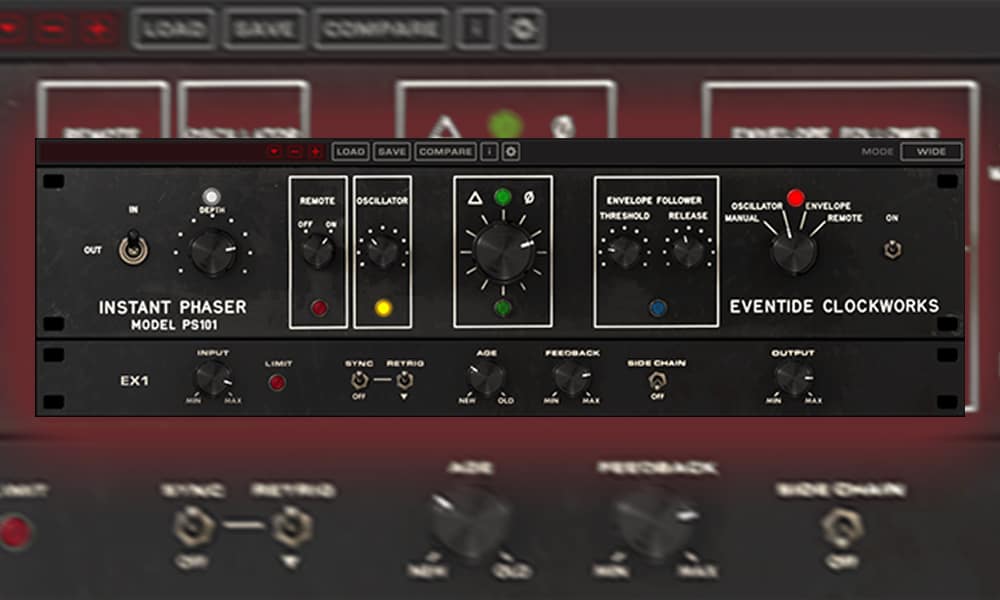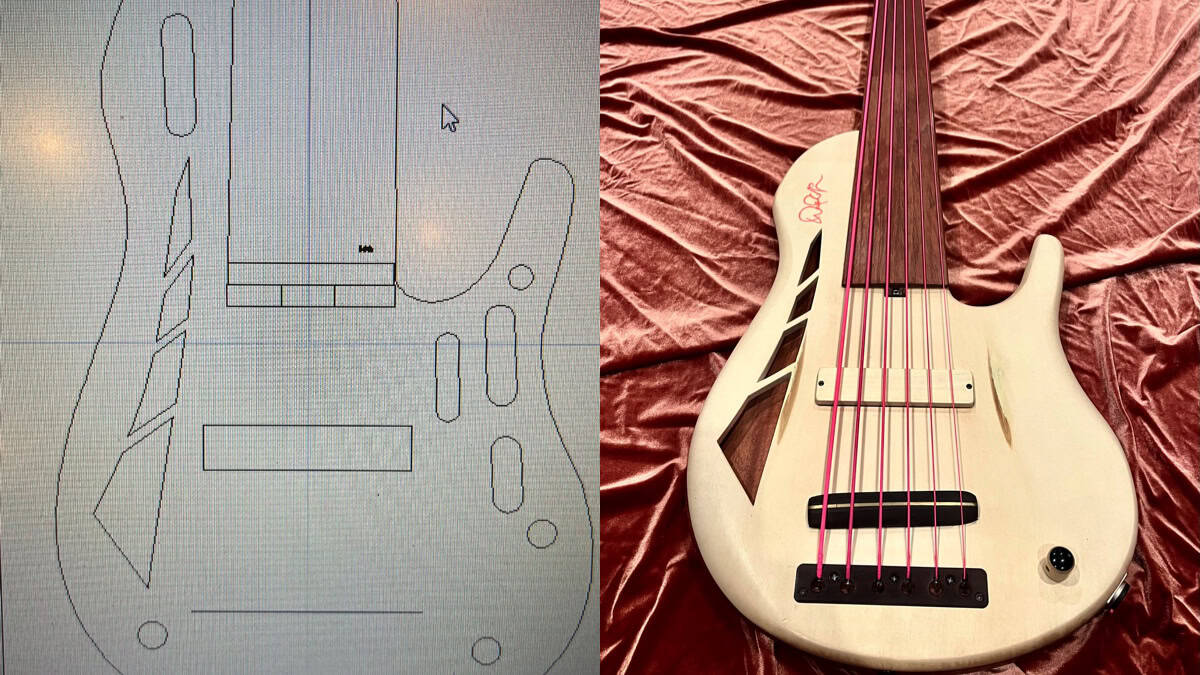Latest
Eventide Instant Phaser MK II Bridges Gap between Analog and Digital

In 1972, Eventide Audio released the PS101 Instant Phaser. One of the first dedicated electronic effects units ever (see below), it immediately caught the attention of forward-thinking studio engineers (that had previously been creating these effects manually), and such legendary artists as Jefferson Airplane, Todd Rungren and even Led Zeppelin. Still used in many iconic recording studios around the world, Eventide Audio is proud to release the Instant Phaser MK II plugin, for those of us that can’t find the “real thing.”

Bringing Analog into Digital
The thing about analog is that nothing is “precise.” Any component you use will have a certain value associated with that. However, there IS some wiggle room; a .033 value capacitor can be anywhere from .031-.035 and still considered within spec. And, when you use multiples of these components, the variations of that is where the magic happens. This is why analog stompboxes, while they’re the same model, can sound slightly different. With digital, you will get razor-sharp precision and consistency. Replicating the nuances of analog into digital was the mindset that was used when tackling this project.
Modern Options
While staying true to the nuance and feel of the original, analog unit, the folk at Eventide Audio looked to update it with some modern options that would enhance the experience. The first was to allow you to sidechain the effect, to allow your sound to be effected by another signal. You can now control which output (either the main or the aux) with a mode switch. The “Age” knob also allows you to control how you want to hear the phaser; brand new from the factory, or with 40+ year old analog parts. All of these options help enhance the overall usability and experience with the Instant Phaser MK II.
But, How’s It Sound?
In a word? Fantastic. One of the features I was really intrigued by was the “age” function, where you could emulate a brand new, straight from the factory unit or one that had been in a studio for decades. Both of these models, while identical, would sound different in the real world. But how different? What I noticed is that with the dial closer to the “new” unit, it was a cleaner, more precise phaser effect. As you moved that dial clockwise to the “old” unit, the effect got a little looser, not as precise from note to note, and even the timbre was slightly warmer, and not as crisp. Dial in some feedback as well, and you have a killer analog phaser tone in a digital work environment.
The other features work just as well as you’d think. The shape knob really works great in navigating between a sharp triangle wave, and one that is much more circular, and not as precise. This attention to detail is apparent as you’re mixing a track with the effect; it’s not just a plugin but an accurate representation of the actual hardware.
Conclusion
Replicating the nuance and magic of the analog world into a precise digital world is no small feat. The Instant Phaser MK II from Eventide Audio was painstakingly recreated to bring the landmark effects unit to the digital studio, keeping the original analog sound and updating it with modern features. The result is the bridge between two audio worlds that is going to inspire a lot of recording engineers, producers and artists. This is one to check out.
Appendix: Eventide Innovation
The creation of the PS101 Instant Phaser wasn’t the only thing that the owners/founders of Eventide Audio – Tony Agnello and Richard Factor – were the first to create. In fact, their combined efforts were recognized this past year at the 2018 Grammys, when they received the Lifetime for Technical Achievement award, for their contributions to pro audio.
A Timeline of Firsts
- 1972 – Instant Phaser World’s first studio electronic effects box. Analog simulation of tape phasing/flanging. For example, Led Zeppelin’s “Kashmir” and Itchycoo Park’s “Small Faces.”
- 1973 – DDL 1745 World’s first digital audio box. Used on hundreds of records for ADT (automatic double tracking) and predelay for plate reverb.
- 1974 – Omnipressor World’s first dynamics effects box. Introduced the innovative concept of the “side chain.”
- 1975 – Instant Flanger World’s first studio variable delay box. First realistic emulation of tape flanging. Used to create the strange piano sound on David Bowie’s Ashes to Ashes. Used to enhance stereo image on Cyndi Lauper’s “Time After Time.”
- 1976 – H910 Harmonizer World’s first digital effects box. Combined delay and pitch change. Used on hundreds of records. Famously used by Tony Visconti on David Bowie’s Berlin trilogy.
- 1978 – H949 Harmonizer World’s first de-glitched pitch change device. Introduced micro pitch change and digitally reversed audio.
- 1982- SP2016 World’s first digital multi-effects processor. Reverb used on countless hit records. Introduced the concept of the effects “plug-in.”
Bass Player Health
Preparing for Performance with Dr. Randy Kertz

Preparing for Performance…
This month we discuss how to prepare for a performance and easy strategies that go a long way.
Dr. Randall Kertz is the author of The Bassist’s Complete Guide to Injury Management, Prevention and Better Health. Click here to get your copy today!
View More Bass Health Articles
Gear Reviews
The Frank Brocklehurst 6-String Fretless Bass Build

A few months ago, my Ken Bebensee 6-string fretted bass needed some TLC. You know, the one rocking those Pink Neon strings! I scoured my Connecticut neighborhood for a top-notch luthier and got pointed to Frank Brocklehurst, F Brock Music. He swung by my place, scooped up the bass, and boom, returned it the next day, good as new. Not only that, he showed up with a custom 5-string fretted bass that blew me away. I couldn’t resist asking if he could whip up a 6-string fretless for me.
Alright, let’s break down the process here. We’ve got our raw materials: Mahogany, Maple, and Holly. Fun fact – the Mahogany and Maple have been chilling in the wood vault for a solid 13 years. Frank is serious about his wood; they buy it, stash it away, and keep an eye on it to make sure it’s stable.
First up, they’re tackling the Mahogany. Frank glues it together, then lets it sit for a few days to let everything settle and the glue to fully dry. After that, it’s onto the thickness planer and sander to get it nice and flat for the CNC machine. The CNC machine’s the real star here – it’s gonna carve out the body chambers and volume control cavity like a pro.
While the Mahogany’s doing its thing, Frank goes onto the neck core. Three pieces of quartersawn maple are coming together for this bad boy. Quartersawn means the grain’s going vertical. He is also sneaking in some graphite rods under the fingerboard for stability and to avoid any dead spots. The truss rod is going to be two-way adjustable, and the CNC machine’s doing its magic to make sure everything’s just right.
Now, onto the design phase. Frank uses CAD software to plan out the body shape, neck pocket, chambering, and those cool f-holes. I had this idea for trapezoid F-holes, just to do something different. The CAD software also helps us map out the neck shape, graphite channels, and truss-rod channel with pinpoint accuracy.

Once everything’s planned out, it’s CNC time again. Frank cuts out the body outline, neck pocket, and the trapezoid F-holes. Then it’s a mix of hand sanding and power tools to get that neck just how we like it. Oh, and those f holes? We’re going for trapezoids of different sizes – gotta keep things interesting.
Next step: gluing that neck into the pocket with some old-school hide glue. It’s got great tonal transfer and can be taken apart later if needed. Then it’s onto hand-carving that neck-body transition.
For the custom-made bridge, Frank uses brass for definition and Ebony for tonal transfer and that warm, woody sound.
BTW, for tunes, Frank went with Hipshot Ultralights with a D Tuner on the low B. This way I can drop to a low A which is a wonderful tone particularly if you are doing any demolition around your house!
Now it’s time for the side dots. Typically, on most basses, these dots sit right in the middle of the frets. But with this bass, they’re placed around the 1st, 3rd, 5th, 7th, 9th, and 12th frets.
Frank’s got his pickup hookup. Since the pickup he was building wasn’t ready, he popped in a Nordstrand blade to give it a whirl.
It sounded good, but I was itching for that single-coil vibe! And speaking of pickups, Frank showed me the Holly cover he was cutting to match, along with all the pink wire – talk about attention to detail!
A couple of things, while it is important for me to go passive, it is equally important for me to just go with a volume knob. Tone knobs are really just low-pass filters and the less in the way of a pure sound for me, the better.
Finally, it’s string time! As usual, I went for the DR Pink Neon strings. Hey, I even have matching pink Cons…Both low tops and high!
Once we’ve got everything tuned up and settled, we’ll give it a day or two and then tweak that truss rod as needed. And voila, we’ve got ourselves a custom-made bass ready to rock and roll.
I want to thank Frank Brocklehurst for creating this 6 string beast for me.
Latest
This Week’s Top 10 Basses on Instagram

Check out our top 10 favorite basses on Instagram this week…
Click to follow Bass Musician on Instagram @bassmusicianmag
FEATURED @adamovicbasses @loritabassworks @hiltonguitars @colibriguitars @sterlingbymusicman @anacondabasses @dmarkguitars @fantabass.it @alpherinstruments @vb_custom_travel_guitars
Bass Videos
Interview With Bassist Erick “Jesus” Coomes

Bassist Erick “Jesus” Coomes…
It is always great to meet a super busy bassist who simply exudes a love for music and his instrument. Erick “Jesus” Coomes fits this description exactly. Hailing from Southern California, “Jesus” co-founded and plays bass for Lettuce and has found his groove playing with numerous other musicians.
Join us as we hear of his musical journey, how he gets his sound, his ongoing projects, and his plans for the future.
Photo, Bob Forte
Featured Videos
Visit Online
www.lettucefunk.com
IG @jesuscsuperstar
FB@jesuscoomes
FB @lettucefunk
Bass Videos
Working-Class Zeros: Episode #2 – Financial Elements of Working Musicians

Working-Class Zeros: Episode #2 – Financial Elements of Working Musicians
“These stories from the front are with real-life, day-to-day musicians who deal with work life and gigging and how they make it work out. Each month, topics may include… the kind of gigs you get, the money, dealing with less-than-ideal rooms, as well as the gear you need to get the job done… and the list goes on from there.” – Steve the Bass Guy and Shawn Cav






























